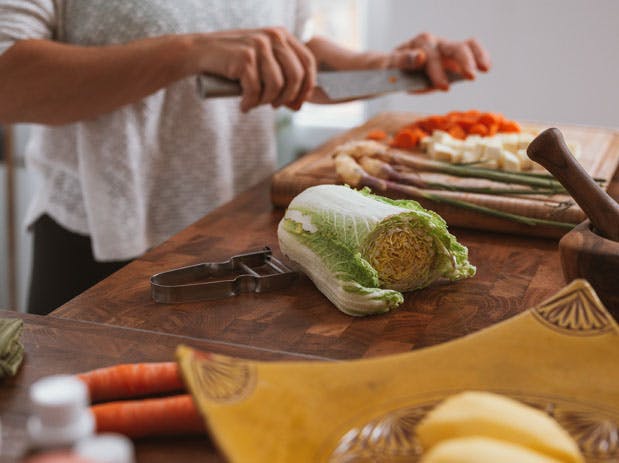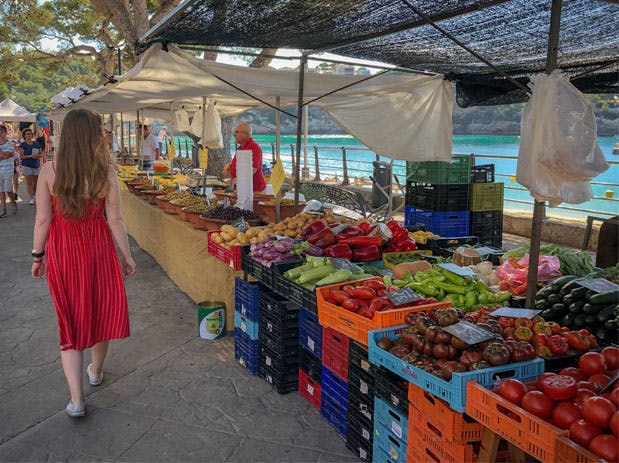Simple Ways to Reduce Waste in Your Kitchen
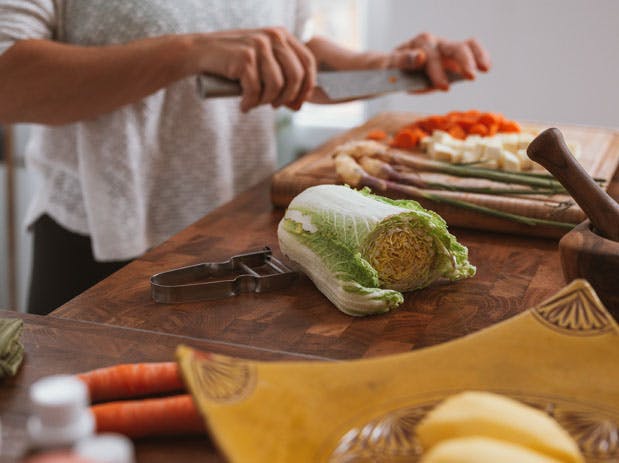
Contrary to popular belief, living sustainably does not have to be expensive or time-consuming, rather, it simply requires changes in habit and your overall mindset. Making these changes can be challenging at first, but are incredibly impactful (and may help you save money!) in the long run. In honor of Earth Day, and given that the kitchen is one of the most waste-producing places in your home, we've created a list of simple adjustments you can make in the kitchen to help make the world a better place.
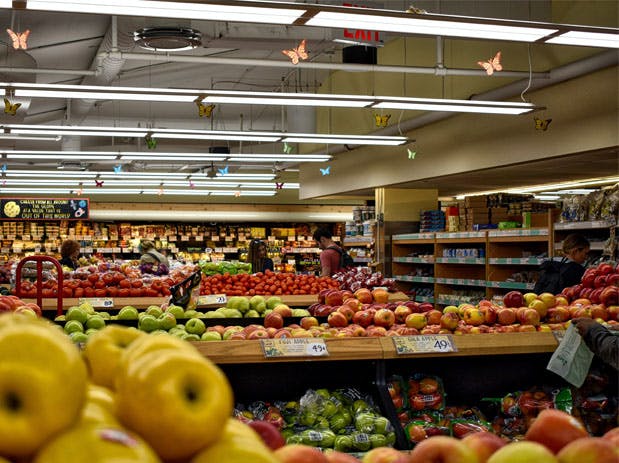
Have a grocery game plan
Before heading to the grocery store, take inventory of what you already have in your fridge and pantry. This will give you an idea of what you already have and what needs to be used up. Then, think about the meals and snacks you plan to eat during the week, and make a shopping list of items and recipe ingredients that you'll need to buy at the store. Try your best to stick to the list to avoid impulse buying and overbuying (especially when it comes to produce and items with an expiration date), which will help to reduce food waste.
Though buying in bulk may be convenient and seems cost effective, bulk shopping can actually lead to more food waste. Not to mention, buying in bulk only saves money if you're able to consume the food before it spoils! Bulk purchases should be reserved for nonperishables or foods you can reasonably use, store or preserve. Instead, make frequent trips to the grocery store once or twice per week rather than shopping in bulk every few weeks.
Most importantly: Don't shop hungry. It will save you from some impulse buying and overbuying, which can save you money and reduce food waste!
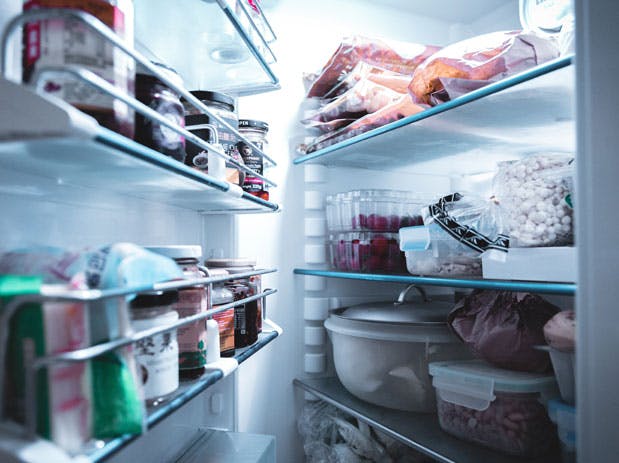
Strategically store perishable foods
If you've bitten off more than you can chew when shopping for perishable foods (e.g. produce, bread, and dairy products, among others), you have a couple strategies for keeping perishables for longer periods of time to help avoid generating unnecessary food waste.
Throw them in the freezer. You can freeze pretty much anything to make it last longer, like fruits and vegetables, bread, meat, poultry and fish. If you find yourself buying abundant seasonal produce like berries, or you find that your bananas are ripening quickly and your spinach is getting softer than you'd like, these are great fruits and veggies to freeze and use in smoothies!
Be wary of placing fruits close to other produce. Fruits give off natural gases as they ripen, which cause other nearby produce to ripen (and spoil!) at a faster rate. Store fruits like bananas, apples and tomatoes by themselves, and store other vegetables in separate bins or in the vegetable drawer in the fridge.
Store fruit in the fridge for maximum freshness. Fruit should really be stored in the refrigerator for maximum freshness. If you prefer eating fruit at room temperature, simply take what you'll eat for the day out of the refrigerator in the morning.
Additional tip: Wait to wash fruit like berries and cherry tomatoes until you want to eat them to prevent mold!
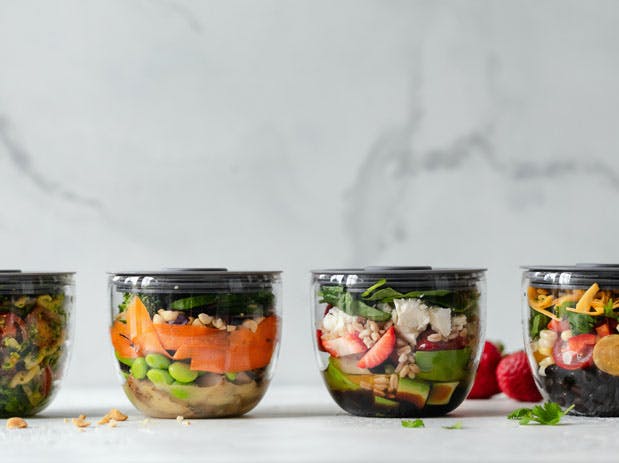
Use reusable food wraps and glass containers
Instead of using cling wrap, zip-lock bags, aluminum foil and plastic containers with a relatively short life time, use durable glass containers and plastic wrap alternatives.
Glass jars and glass tupperware are affordable staples that are washable, reusable, recyclable, and durable -- perfect long-term, sustainable storage. Not to mention, they don't pose the same potential health risks that plastic containers do. Glass containers can be used for storing leftovers and pretty much any food you'd normally cover with cling wrap or put in a zip-lock bag. Many health food stores (prior to the pandemic, that is) allow you to use your own reusable containers in the "bulk bin" section, where a variety of seeds, nuts and grains are sold at a per/lb rate.
If you prefer a wrap-like way to cover your food, there are a few earth-friendly options. Beeswax wrap is a reusable, plastic free alternative -- it's made of organic cotton and beeswax, which makes it naturally malleable and the perfect cling wrap-like option. You can also use flat cloth wraps (such as cloth napkins or dishtowels) with an elastic to cover the tops of bowls. Lastly, soy wax paper is compostable and nontoxic, and the perfect way for wrapping baked goods, produce, and deli items.
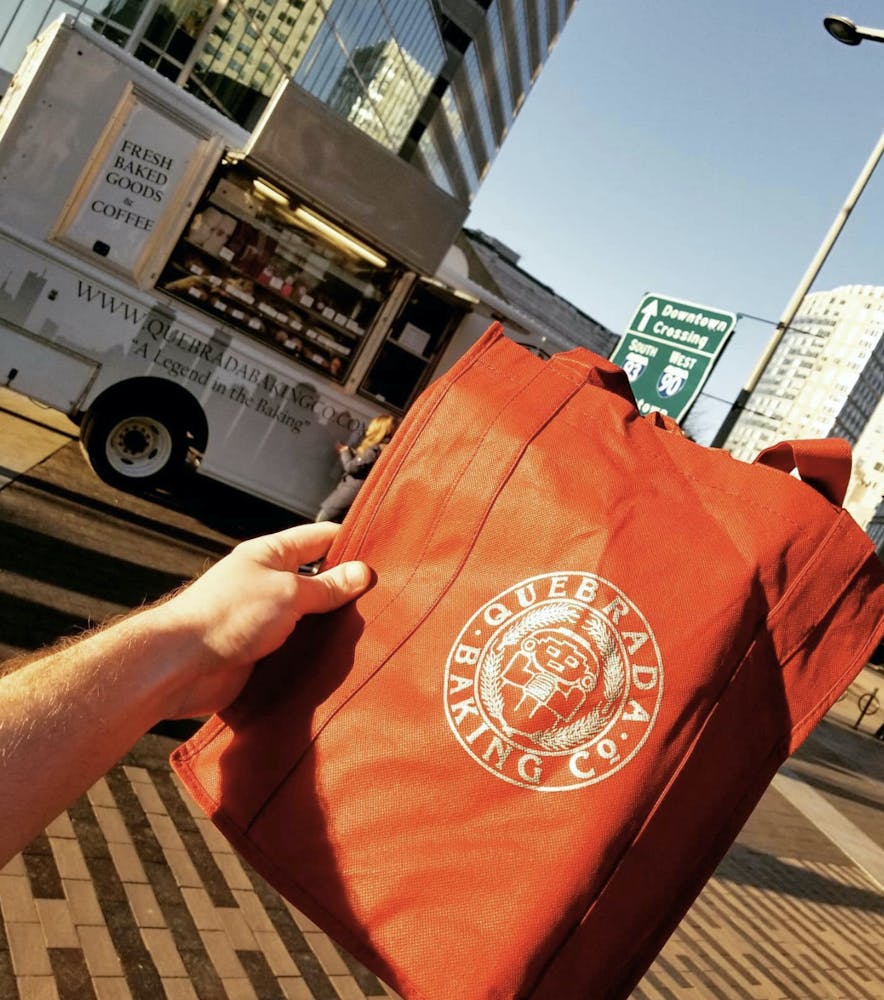
Reduce single use
Reducing the amount of single use items you use is an easy and incredibly impactful way to help reduce waste. Here are a few easy swaps to make:
Swap plastic bags with eco-friendly reusable shopping bags. Tip: Keep them in your car or in your purse so you never forget them! Support Quebrada Baking Co and reduce your waste with one of our Quebrada tote bags.
Use reusable coffee cups. Not only are coffee tumblers better for the planet, but they're also spill proof and help to keep your coffee hotter for longer. They can even keep drinks like smoothies and iced coffee nice and cold too! Check out our Quebrada tumblers here.
Keep a reusable straw on hand. This one probably needs little explanation, but plastic straws are used once, and can’t even be recycled! You can simply ditch using straws entirely, or if you prefer using a straw for your drinks, be sure to carry around a reusable stainless steel one in your purse or in your car. The stainless steel ones are a great option because they are more durable than glass or bamboo straws, easier to clean, and won’t rust. For young ones who insist on using straws, be sure to check out these reusable, BPA free, silicone drinking straws.
Eliminate the use of paper towels by investing in a set of basic microfiber cloths. Instead of paper towels, use cloths for wiping down countertops, appliances, cleaning up spills, etc. and keep a container of them under the kitchen sink for easy use. Unlike paper towels, you can also easily throw them in the wash and reuse them over and over.
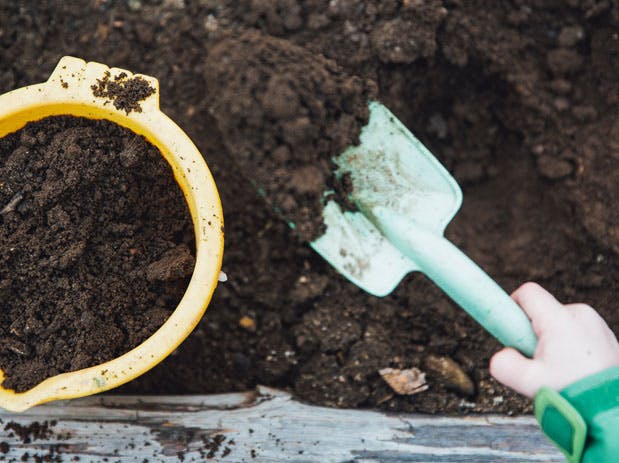
Compost
You can compost anything that comes from nature, including fruit and veggie scraps, eggs shells, yard waste (like grass clippings), and even coffee grounds. In fact, coffee grounds make excellent plant fertilizer because they are high in nitrogen, phosphorus and potassium, which are nutrients that plants need to grow.
Although not everyone has a yard for an outdoor composter, small countertop composting systems make the practice easy and accessible to everyone, even apartment-living city dwellers!
Get creative with cooking
When cooking, we often throw away a lot of our produce and protein that we could instead utilize in our meal prep. For example, the stems of cauliflower and broccoli, other vegetable trimmings, and your leftover chicken could be repurposed into a stock rather than being thrown straight in the trash. Some other creative cooking techniques that extend the life of your food include dehydrating and pickling. Lastly, take a thorough look through your pantry and fridge once a week prior to hitting the store. Get creative and figure out a way to put together a meal with all of your leftovers, and the spices and dry goods you already have on hand in the pantry. If you simply cannot find a way to repurpose leftover produce, be sure to compost it!
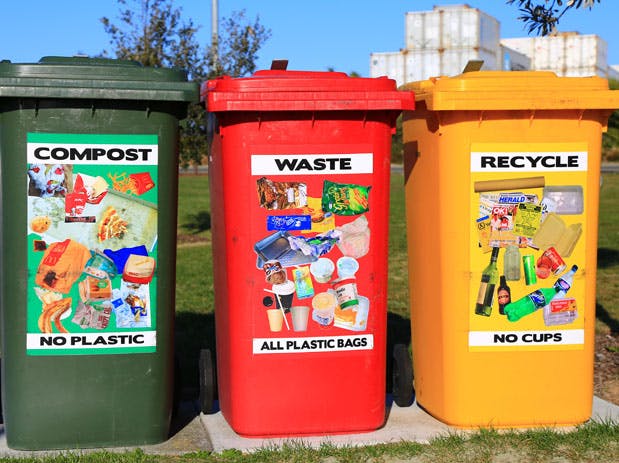
Mindfully recycle
You might be surprised to learn what can actually be recycled -- depending on your local city guide lines and recycling facility capabilities. For instance, you may be able to recycle batteries, lightbulbs, electronic waste, cooking pots, and more. Before throwing something away, take a moment to think about whether the item can be recycled. It's important to educate yourself about local recycling regulation, and know what can and cannot be recycled in your area. This site provides a list of links to each state’s recycling guide. Lastly, be sure to cleanse food out of the recycled container, as food contamination ruins whole recycling batches!
Do your best to eat locally
Purchasing locally grown food reduces demand for food to be transported large distances, which requires a lot of energy to transport and is a major contributor to carbon emissions. The fewer miles your food travels to get to your plate, the more environmentally friendly! Buying locally also helps to maintain farmland in your area, supports local farmers and boosts the local economy by keeping money circulating within the community.
Find your local farmer’s market or consider joining a Community-Supported Agriculture (CSA) program, a food production and distribution system that directly connects farmers with consumers. Another option is to grow your own food, whether it be in your backyard, patio or community garden. Even growing a few herbs on your kitchen countertop will help you to reconnect with the earth, and might help you have a greater appreciation for farmers and the food they grow.
Check out our latest blog post for how to find a farmer's market near you.
Remaining mindful of our food waste and integrating a few new habits at a time into our lives are great first steps to lowering our impact on the environment. As we have all been spending more time at home (which perhaps includes trying new dishes and making more home-cooked meals!), we have the opportunity to develop a new way of thinking and doing that reduces our food waste, saves money and saves resources. Happy Earth Day!


